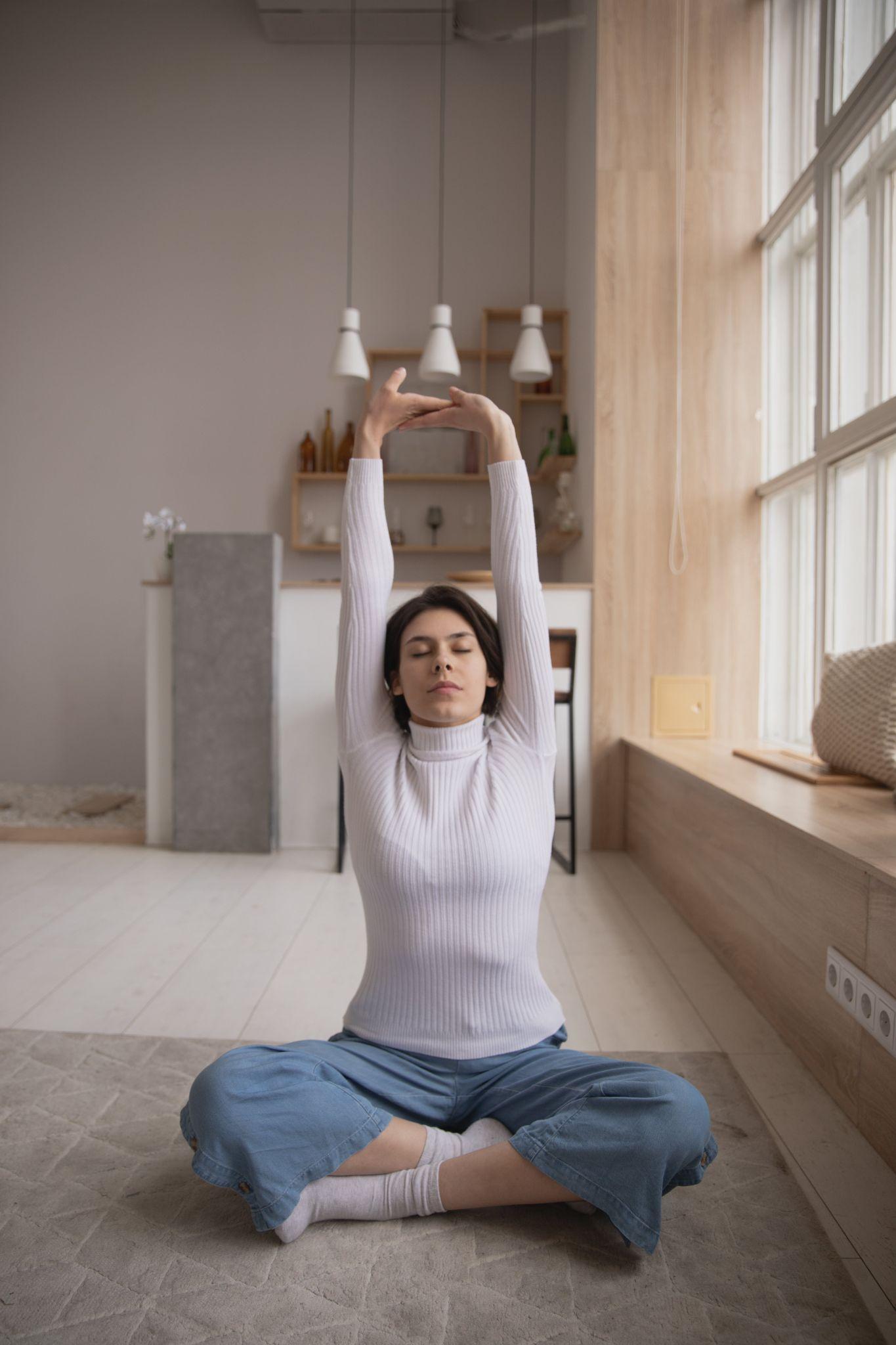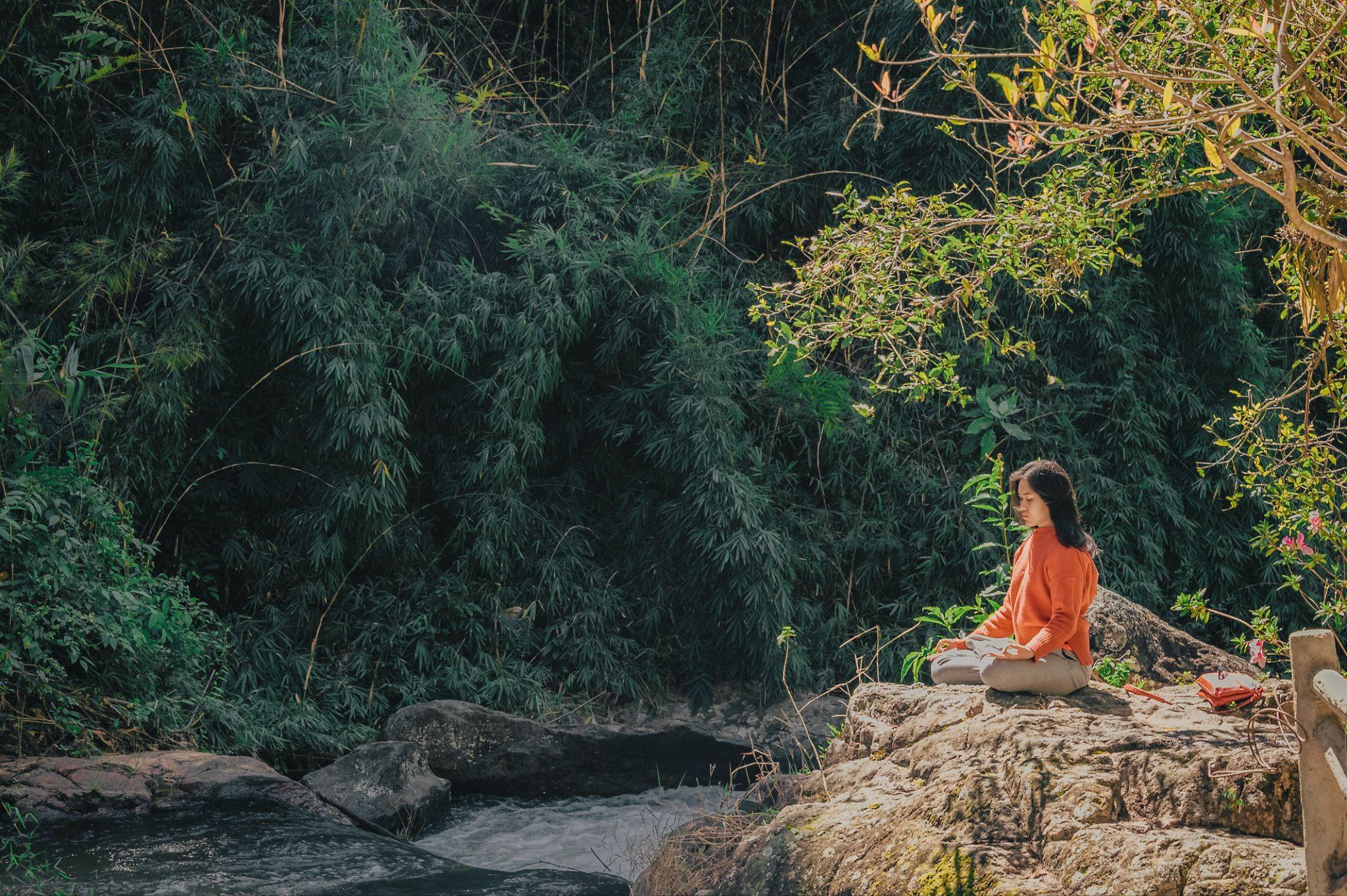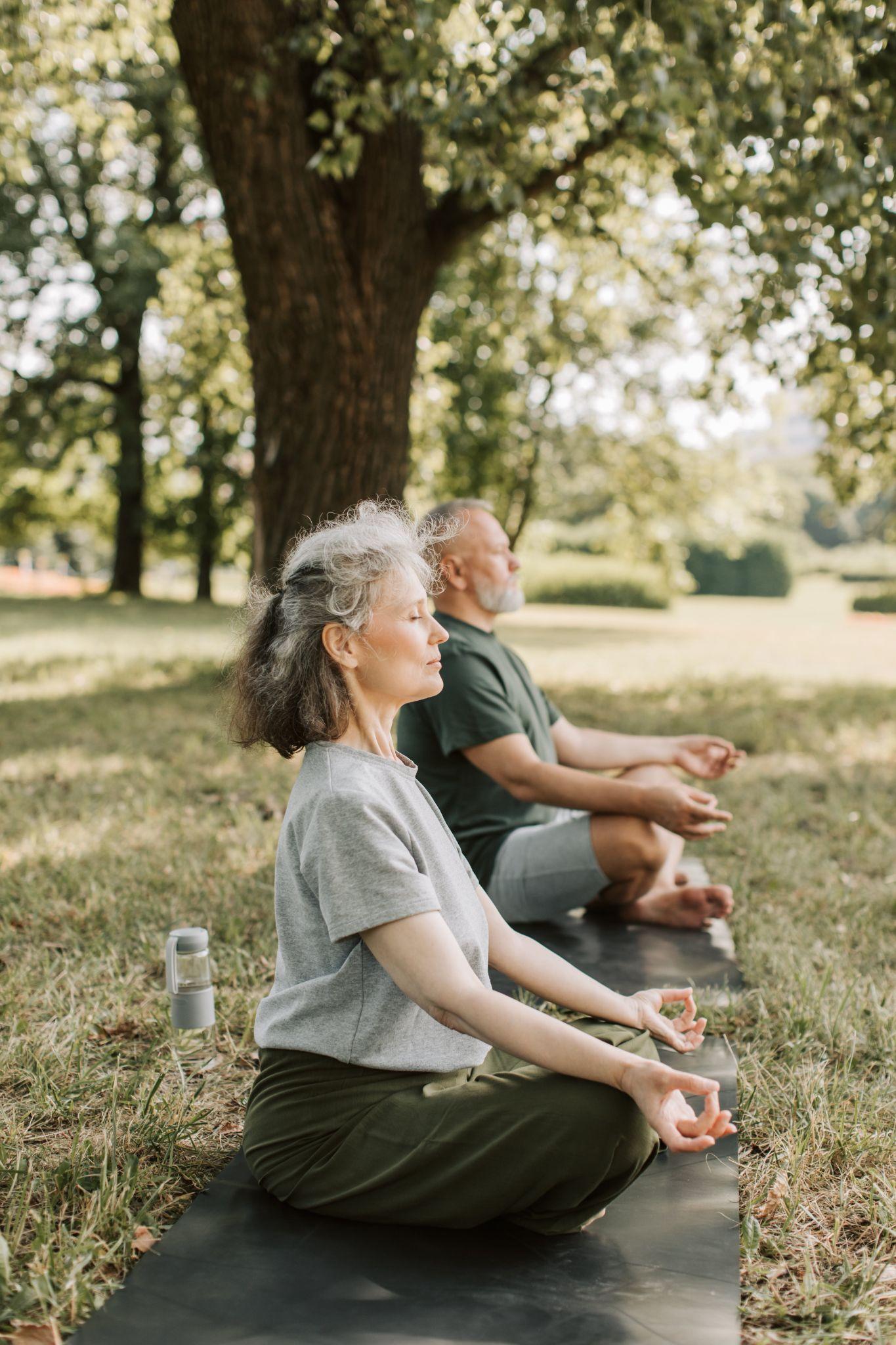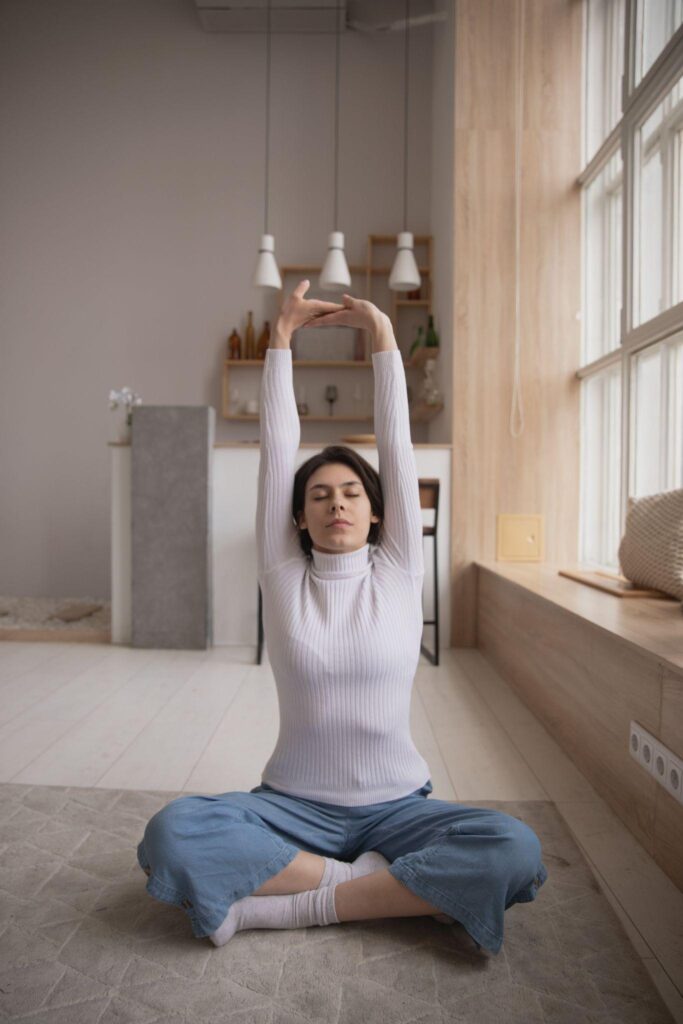Yoga and Kapalbhati: How Does Yoga Give You Radiant Skin?
Sometimes you can judge a book by its cover. Appearance often predicts behavior in surprising ways. Demi Moore once said, “I am a big believer in the fact that if you focus on good skincare, you really won’t need a lot of makeup.” It’s easy to spot a yoga practitioner because if there’s one thing seasoned yoga practitioners are known for, it’s great skin.
What’s great skin? A mirror of great health! Healthy skin is smooth, soft, evenly toned, and appropriate for natural aging. It makes sense, right? Moreover, these external factors are an indication that the skin is functioning properly by protecting your body from an unkind environment, preventing harmful germs and bacteria from entering, and retaining its natural waterproof property.

The Connection Between Yoga and Healthy Skin
Ever wonder why yoga instructors always have a natural glow to their faces, and their skin seems so relaxed? Is it the deep, restorative breaths and meditative state that keep wrinkles at bay, or is it the focused flows of movement that increase circulation or is it the yog nidra, the deep relaxation? Well, it is known that practicing yoga can reduce the signs of aging and give your skin a natural, clear, and beautiful glow.
- Yoga postures increase circulation in your body, which helps to smooth your skin.
- Inversions are especially wonderful, as being upside down sends blood to your brain, which nourishes your face with vital nutrients at the cellular level.
- Yoga postures also help to balance your chakras, which stimulate your hormonal systems that are responsible for slowing down the aging process.
- Yoga in general improves the skin by reducing stress (a common catalyst to breakouts and fine lines) and removing toxins from the body.
- Yoga practice balances your hormones and boosts the flow of oxygen-rich blood to your skin. This naturally keeps your skin resilient and prevents dryness as well as excessive sagging.
- Yoga tones the muscles of your face and neck.
While specific practices like Surya Namaskar and certain yoga poses such as uttanasana or adhomukh shwanasan or forward bends, inversions, and seated twists offer skin benefits, it’s a regular yoga practice that truly cultivates that healthy, radiant glow.

Kapalbhati: Revitalizing Your Skin
This has been practiced by yog gurus and saints for ages and has been referred to as ‘sanjeevani medicine’ because of its multilevel benefits. It clears your body of all toxins, leaving you feeling fresh and rejuvenated. Kapalbhati infuses a new life into you.
Kapalbhati literally is ‘that which shines or brings a glow to the forehead – kapaal’. In Sanskrit, ‘kapaal’ means ‘skull’ or ‘forehead’, and ‘bhati’ means ‘luminous’ and ‘perception’. Kapalbhati is the practice that brings a state of luminousness, or clarity in the mind as well as the body by
- cleansing the nasal passageway and the sinuses,
- removing carbon dioxide gas which is toxic to the body and mind,
- and supplying the brain with fresh oxygen-rich blood.
It is essentially a voluntary abdominal breathing practice with a focus on forceful exhalations. In normal breathing, inhalation is active but exhalation is passive. In Kapalabhati, exhalation is active while inhalation is passive. It is done in quick succession with the help of the abdominal muscles, while the chest is more or less quiet and unmoved. The abdominal muscles are made to contract actively with force so that the forceful upward movement of the diaphragm expels the air out. The diaphragm then descends easily, creating a slight reduction in the pressure in the lungs, and the atmospheric air rushes in.
Kapalbhati is a rapid diaphragmatic breathing method that cleanses and energizes. It is the kriya that cleanses the respiratory tract and destroys all mucous disorders. Broadly speaking, it stimulates an all-round activity in the body. It expels the stagnant air in the lower lobes of the lungs, (which remains there due to shallow breathing). It also clears out the air passage, the lungs, and the nostrils.
With the practice of Kapalbhati the lungs are cleansed of carbon dioxide – the toxic end product of metabolism. Kapalbhati not only cleanses the lungs but also rids the tissues and blood of toxic waste products, most of which ultimately get converted to carbon dioxide. This brings a sense of lightness to the body and alertness in the mind. The practice brings a glow to the crown and lightness to the brain; hence the name Kapalbhati.

How to Perform Kapalbhati
- Sit in a comfortable pose with an erect spine, and maintain its natural curve. The position must be such that the belly muscles are relaxed and able to move freely and actively, keeping the body steady and comfortable.
- Place your palms on the thighs or knees. This helps lift the spine and pushes the shoulders back.
- Relax the nose and soften the face with a gentle smile.
- Begin with a chest-expanding inhalation and while maintaining it, start the practice. Use your stomach muscles to perform active forceful exhalations, followed by passive soundless inhalations. All breathing is done through the nose.
- During exhalation, propel out the air through a strong flapping movement of the abdomen in an upward direction. At the end of each exhalation allow the abdominal muscles to relax as the inhalations happen passively, recoiling from the force of exhalation. Inhalation is smooth and effortless and prepares the practitioner for the next thrust of the abdomen.
- A correct practice of Kapalabhati produces a crisp sound as one exhales without any facial contortions. The sound is produced by the volume of air being pushed up by the forceful action of the diaphragm and not the muscles of the chest, shoulders, neck, or face.
- To start with do 10-20 expulsions per round, resting between the rounds. One can increase the speed gradually and the number of expulsions to about 60 per round. With regular and sustained practice, one can achieve a speed of 100-120 strokes per minute. It is vital not to sacrifice the force of the abdominal contraction to achieve a greater speed.
- Exhalations should be regular and consistent like the ticking of the clock. Jerky and erratic breaths will lead to air hunger in the form of gasping for breath intermittently. The rhythm should be slow and steady initially, allowing enough time for spontaneous inhalations to occur.
- At the end of one round, take a short rest. Sit very still observe your body and mind and experience the feeling of peace. There will be an automatic suspension of breathing. This is called Kewala Kumbhaka. The urge to breathe stops for a few seconds. Simultaneously the mind experiences a deep state of stillness, silence, calm, and peace. Enjoy this state of deep rest and freshness.
- Wait until your breath automatically resumes and then go on to the next round.
- How much to practice – If you feel fatigued, dizzy, or experience discomfort in the abdomen or the back during the practice, slow down or stop for a while. Stay within your capacity as it is not a competitive activity.
It’s better done early in the morning with an empty stomach. Pregnant women and high blood pressure patients should not do the practice without consultation.
In conclusion, yoga and Kapalbhati unlock the secrets to radiant skin by enhancing circulation, balancing hormones, reducing stress, and detoxifying the body. Embrace these ancient practices for not just great skin, but holistic well-being.

